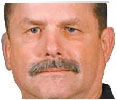
TALK ON THE STREET
September 23, 2015
Cut Off man’s work ethic, dedication the foundation for his success
September 23, 2015Fall is just around the corner… thank goodness! And if you’re a hunter or wildlife lover, this season may also bring thoughts of the upcoming cold fronts, cool weather, and days afield, and… how to enhance the experience.
By increasing concentrations of wildlife on natural areas through food plot plantings, the likelihood of encountering them are greatly increased. Also, by providing nutritious supplemental food plantings, the health and quality of wildlife can be enhanced.
So … what to plant and when? Here are some cool season, fall, food plot planting recommendations from Dr. Don Reed, the LSU AgCenter’s Wildlife Specialist.
Austrian Winter Peas
Sept. 1 – Nov. 1
Austrian winter peas, a cool season forage, rival warm season plantings of soybeans and cowpeas in their attractiveness to white-tailed deer. Inoculated seed should be drill planted at 40 pounds per acre or broadcast at 40 to 60 pounds per acre. These plantings are better adapted to heavy clay soils with moderate to heavy fertility. Fertilize at 250 pounds per acre with 0-14-14 and maintain a soil pH between 6.0 and 7.0.
Crimson Clover
Sept. 1 – Nov. 15
Crimson Clover is one of eight or more clovers that can be planted for deer in Louisiana to provide a high protein source in the winter. Clovers are generally planted in a mix with other cool season annuals. Clovers are rather expensively priced per pound, but this cost can usually be justified when one looks at the small amount of seed required to cover an area. Clovers are one of the items land managers can save money on by mixing chosen species themselves rather than buying premixed bags. In planting any variety, take care to maintain pH at recommended levels. Most clovers are very site specific. The big advantage of Crimson Clover is its high tolerance to acidic soils. With any species of clover chosen for planting, reseeding can be enhanced by disking or mowing in the fall after initial establishment. After soil disturbance, apply 0-20-20 fertilizer at the rate of 300 pounds per acre and maintain soil pH between 6.5 and 7.5. Seed should be inoculated and drill planted at 15 pounds per acre or broadcast at 20 pounds per acre.
Subterranean Clover
Sept. 1 – Oct. 15
Subterranean Clover is a cool season annual legume that can tolerate shade quite well, making it an ideal choice for plantings on narrow logging roads and small loading decks in thinned timber stands. Fertilize at the rate of 200 pounds per acre of 0-20-20 and maintain soil pH between 6.5 and 7.0. Inoculated seed should be drill planted at the rate of 8 pounds per acre or broadcast at 15 pounds per acre.
White or Ladino Clover
Sept. 1 – Nov. 15
White Clover or Ladino Clover is another popular cool season annual legume that provides excellent high protein deer forage. Plantings can be established by seeding as little as 4 pounds per acre when drill planting and 5 to 6 pounds per acre when broadcast planting. Fertilize with 400 pounds per acre of 0-20-20 and maintain soil pH between 6.5 and 7.0. Ladino Clover varieties include Osceola, Tillman, Regal, Louisiana SI and California.
Elbon Rye
Sept. 1- Nov. 15
Elbon rye is a small grain annual plant that is similar to wheat and heavily used by deer in its early growth stages. It is very cold tolerant and can survive fairly frigid conditions later in the year although as it matures it loses a portion of its protein levels. Plantings established in the fall begin to die back the following summer. Elbon rye should be drilled or broadcast at the rate of 80 pounds per acre with 200 pounds per acre of a balanced fertilizer blend such as 13-13-13 applied at planting. Soil pH should be maintained between 5.6 and 6.5. Elbon rye makes its best growth on well-drained, light-textured soils.
Alan Matherne is the Louisiana Sea Grant/LSU Ag Center Marine Extension Agent specializing in Coastal, Fisheries, & Wildlife.








